Finding Your Sewing Style: A Beginner's Guide
Welcome to the wonderful world of sewing! If you’re a beginner looking to explore your unique sewing style, you’ve come to the right place. This guide will help you navigate through all the exciting aspects of sewing, from discovering your personal aesthetic to mastering essential techniques. Think of sewing as a blank canvas, where your creativity can flourish and your personality can shine through every stitch. Whether you dream of crafting your own garments, creating home décor, or even making gifts for loved ones, understanding your sewing style will enhance your journey and boost your creativity.
First things first, let's dive into the various sewing styles that exist out there. Each style has its own charm and can significantly influence your projects. Are you drawn to the sleek lines of modern sewing, or do you prefer the intricate details of traditional sewing? Understanding these styles can help you express your personality through your creations. Modern sewing often emphasizes minimalism and clean lines, while traditional sewing might incorporate vintage patterns and techniques that tell a story. By exploring these styles, you’ll find a direction that resonates with you, making your sewing experience even more rewarding.
Now that you have a sense of your sewing style, let’s talk about the essential techniques every beginner should master. Think of these techniques as the building blocks of your sewing journey. Mastering them will ensure a smooth and enjoyable experience while bolstering your confidence. From basic stitching to understanding fabric properties, these skills are crucial.
Let’s start with the basic stitching techniques. These include straight stitch, zigzag stitch, and backstitch—each plays a vital role in creating strong and durable seams. The straight stitch is your go-to for most sewing projects, while the zigzag stitch is perfect for stretchy fabrics. Backstitch, on the other hand, is a lifesaver for hand sewing, providing extra strength. Don’t underestimate the power of these stitches; they can make or break your project!
When it comes to sewing methods, you’ll find yourself choosing between hand sewing and machine sewing. Each has its advantages and disadvantages, and understanding these will help you determine which suits your needs best. Hand sewing offers a level of control and precision that is unmatched, making it perfect for delicate tasks. However, it can be time-consuming. On the flip side, machine sewing is faster and can handle larger projects with ease, but it might lack the personal touch that hand sewing provides. Which one will you choose?
To achieve even and consistent stitches, here are some practical tips: always use the right needle for your fabric type, maintain a steady pace while sewing, and practice regularly. Remember, practice makes perfect! The more you sew, the more your skills will improve, and soon enough, you’ll be creating beautiful projects with confidence.
Selecting the right fabric is crucial for successful sewing projects. Fabrics come in various types, each with its properties that can affect your sewing experience. When choosing fabrics, consider factors like weight, texture, and drape. For example, lightweight cotton is great for beginners, while heavier fabrics like denim may require more advanced techniques. Knowing your fabric will help you make informed choices that align with your sewing style preferences.
Now that you have a grasp on techniques and fabrics, let’s talk about finding the right sewing patterns. Patterns are the roadmap to your projects, guiding you through each step. But how do you choose the ones that resonate with your personal style and skill level? It’s easier than you think! Look for patterns that excite you, whether they are commercial or indie. The key is to find something that speaks to your creativity and aligns with your sewing goals.
There are various types of sewing patterns available, including commercial patterns that you can purchase at fabric stores and indie patterns available online. Each type has its pros and cons, so take the time to explore them. Commercial patterns are often easier to find and come with clear instructions, while indie patterns may offer unique designs that set your work apart. The choice is yours!
Once you’ve found a pattern that you love, don’t be afraid to modify it to better fit your personal style. This could mean adjusting the fit, changing the length, or even adding your own embellishments. Adapting patterns is a fantastic way to ensure that your finished projects are uniquely yours, showcasing your creativity and flair.
- What is the best fabric for a beginner? Lightweight cotton is often recommended for beginners due to its ease of handling and versatility.
- Can I learn sewing online? Absolutely! There are numerous online resources, tutorials, and classes available to help you learn at your own pace.
- How do I choose the right sewing machine? Consider your budget, the types of projects you want to tackle, and whether you prefer a mechanical or computerized machine.
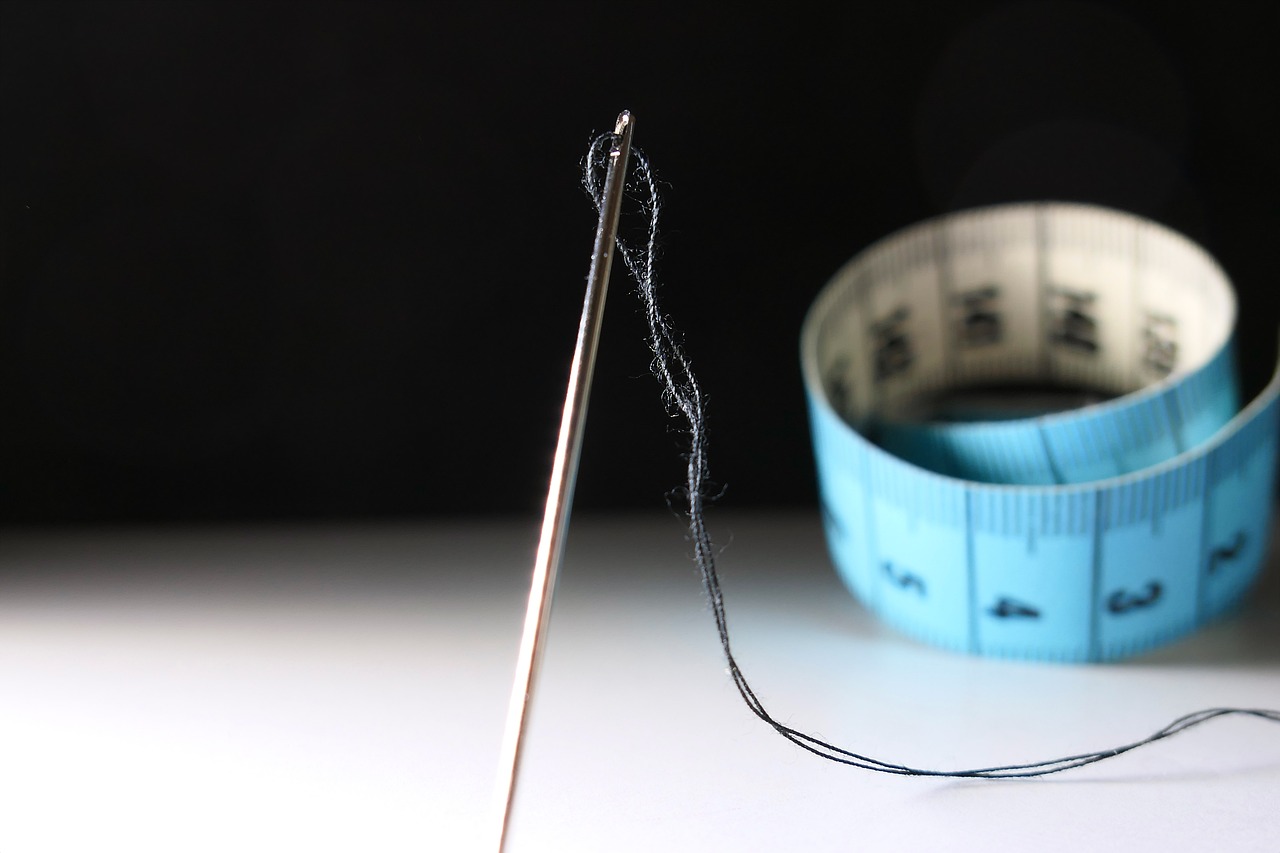
Understanding Different Sewing Styles
When it comes to sewing, the world is your oyster! There are countless sewing styles out there, each with its own flair and personality. Whether you're drawn to the timeless elegance of traditional sewing or the bold creativity of modern techniques, understanding these different styles can truly enhance your sewing journey. Let’s dive into the fascinating realm of sewing styles and see how they can influence your projects and personal expression.
To begin with, let's consider the traditional sewing style. This style often emphasizes classic techniques and patterns that have stood the test of time. Think of vintage garments, intricate hand-stitched details, and the use of natural fabrics like cotton and linen. If you find yourself enchanted by the charm of bygone eras, traditional sewing might be your calling. It allows you to create pieces that not only look beautiful but also carry a sense of history and craftsmanship.
On the flip side, we have the modern sewing style. This approach is all about innovation and personal expression. Modern sewing often incorporates bold prints, unconventional fabrics, and a mix of techniques that challenge the norms. If you love to experiment and push boundaries, modern sewing could be your playground. You might find yourself creating upcycled fashion, using digital prints, or even trying out mixed media projects that combine sewing with other crafts.
For those who are passionate about sustainability, eco-friendly sewing is a style that resonates deeply. This involves using organic materials, repurposing old fabrics, and focusing on ethical production methods. With the growing awareness of environmental issues, many sewists are now looking for ways to make their craft more sustainable. This style not only allows you to express your creativity but also contributes positively to the planet.
There’s also the quilt-making style, which is a beautiful blend of artistry and functionality. Quilting is not just about sewing layers of fabric together; it’s about storytelling through patterns and colors. Each quilt can reflect personal experiences, family histories, or even cultural narratives. If you enjoy working with fabric in a way that tells a story, quilting could be your perfect match.
In addition to these styles, you might encounter garment sewing, which focuses on creating wearables like dresses, shirts, and pants. This style allows for a lot of customization and can be tailored to fit your unique body shape and personal taste. Whether you’re making casual wear or formal attire, garment sewing is a fantastic way to showcase your style.
To help you visualize these different styles, here’s a simple table summarizing the key characteristics:
| Sewing Style | Characteristics | Ideal For |
|---|---|---|
| Traditional | Classic techniques, vintage patterns, natural fabrics | Those who appreciate history and craftsmanship |
| Modern | Bold prints, innovative techniques, experimental | Creative individuals who love to push boundaries |
| Eco-Friendly | Sustainable materials, ethical production, upcycling | Environmentally conscious sewists |
| Quilting | Artistic patterns, storytelling, layered fabrics | Those who enjoy creating functional art |
| Garment Sewing | Customizable wearables, tailored fit, personal style | Fashion enthusiasts looking to create their own clothing |
As you explore these styles, remember that your sewing journey is a personal one. You might find that you gravitate towards one style, or perhaps you’ll blend elements from several to create something uniquely yours. The beauty of sewing lies in its ability to reflect who you are, so embrace the journey and let your creativity shine!
- What is the best sewing style for beginners? Many beginners start with traditional or garment sewing, as these styles often have simpler patterns and techniques.
- Can I mix different sewing styles? Absolutely! Mixing styles can lead to unique creations that truly represent your personal taste.
- How do I choose the right fabric for my sewing style? Consider the characteristics of the fabric, such as weight, drape, and texture, and how they align with the style you wish to create.
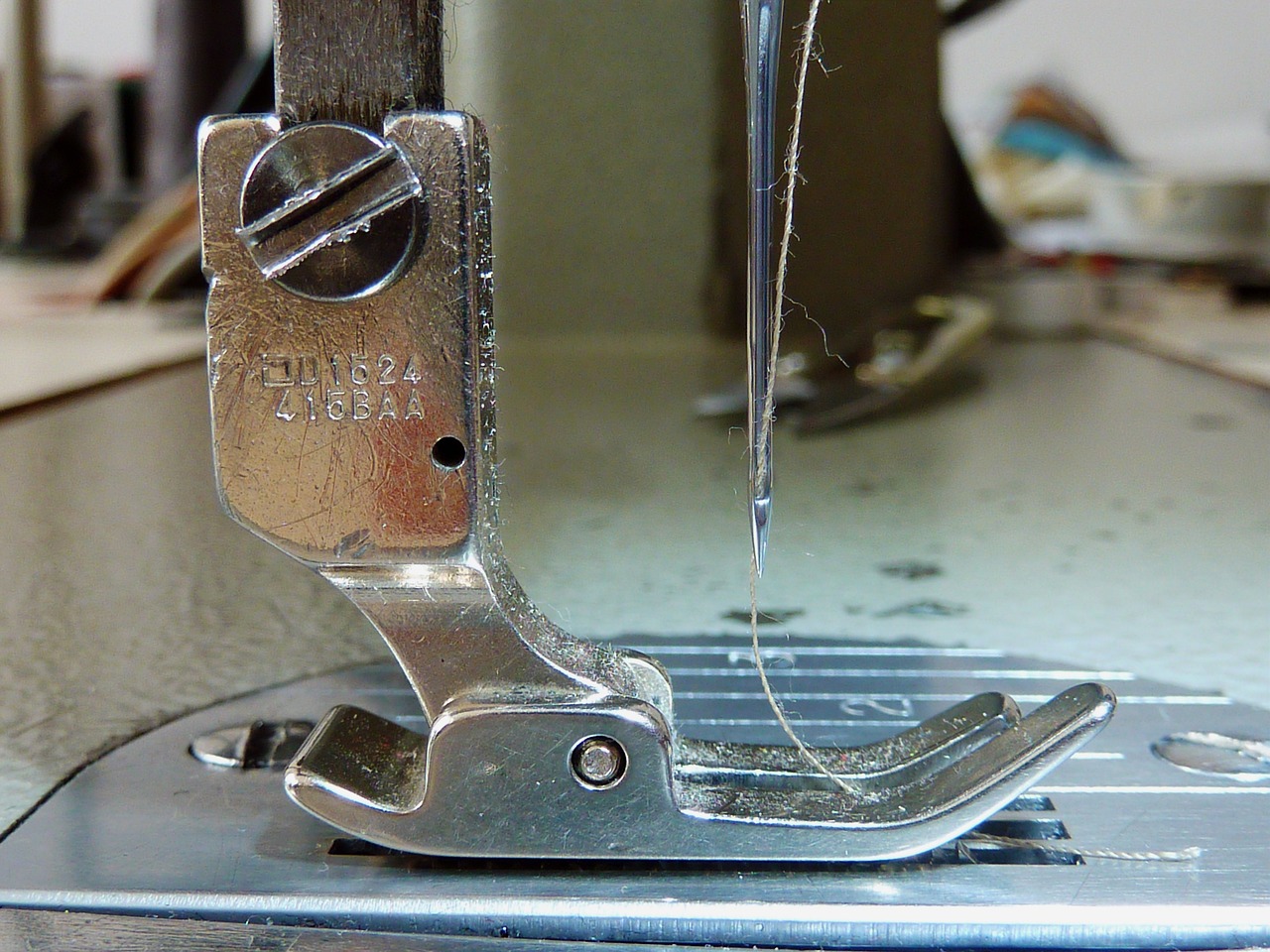
Essential Sewing Techniques for Beginners
Embarking on your sewing journey can be both exciting and a bit daunting. But fear not! Mastering some essential sewing techniques will pave the way for a smooth and enjoyable experience. Think of these techniques as the building blocks of your sewing skills, providing you with the confidence to tackle any project that comes your way. So, let’s dive into the world of stitches, fabrics, and patterns that will enhance your creativity and help you find your unique sewing style!
First things first, let’s talk about the stitching techniques that every beginner should know. These techniques are fundamental, and they will serve as the foundation for all your sewing projects. The most common stitches include:
- Straight Stitch: This is the most basic stitch and is used for most sewing tasks. It’s perfect for joining two pieces of fabric together.
- Zigzag Stitch: This stitch is great for finishing edges to prevent fraying and can also be used for stretchy fabrics.
- Backstitch: This stitch creates a strong seam, making it ideal for areas that need extra durability.
By practicing these stitches, you’ll create strong and durable seams that will hold up over time. Imagine these stitches as the threads that weave your creative story together!
Now, let’s explore the age-old debate: hand sewing versus machine sewing. Each method has its unique advantages and can fit different sewing styles. Hand sewing is great for detailed work and small repairs, while machine sewing is faster and more efficient for larger projects. If you’re someone who enjoys the tactile experience of sewing, hand sewing may resonate with you. On the other hand, if you’re looking to whip up a dress in a weekend, a sewing machine will be your best friend.
To elevate your sewing game, here are some practical tips for achieving even and consistent stitches:
- Practice Regularly: The more you sew, the better you'll get. Consistency is key!
- Use Quality Thread: Investing in good quality thread can make a significant difference in your stitch quality.
- Adjust Tension Settings: Experiment with your machine’s tension settings to find the perfect balance for your fabric type.
These simple adjustments can significantly improve the quality of your sewing projects, making your creations not only beautiful but also durable.
Selecting the right fabric is another crucial aspect of successful sewing. With countless options available, it can feel overwhelming. However, understanding the properties of different fabrics will help you make informed choices. For instance, cotton is a versatile and easy-to-sew fabric, making it perfect for beginners. On the other hand, fabrics like silk or chiffon may require more advanced techniques due to their delicate nature.
Consider your sewing style and the type of projects you want to create when selecting fabrics. Are you drawn to vibrant prints or solid colors? Do you prefer the feel of natural fibers over synthetics? These preferences will guide you in choosing materials that resonate with your creative vision.
Q: What sewing machine should I start with as a beginner?
A: Look for a sewing machine that is user-friendly and has basic features like straight and zigzag stitches. Brands like Brother or Singer offer great options for beginners.
Q: How can I improve my sewing skills?
A: Practice is essential! Start with simple projects, watch tutorial videos, and don’t hesitate to ask for help from experienced sewists.
Q: What fabric is best for beginners?
A: Cotton is an excellent choice for beginners due to its ease of handling and availability in various prints and colors.
Q: How do I choose the right pattern?
A: Look for patterns labeled as 'easy' or 'beginner-friendly.' These patterns typically have fewer pieces and simpler construction techniques.
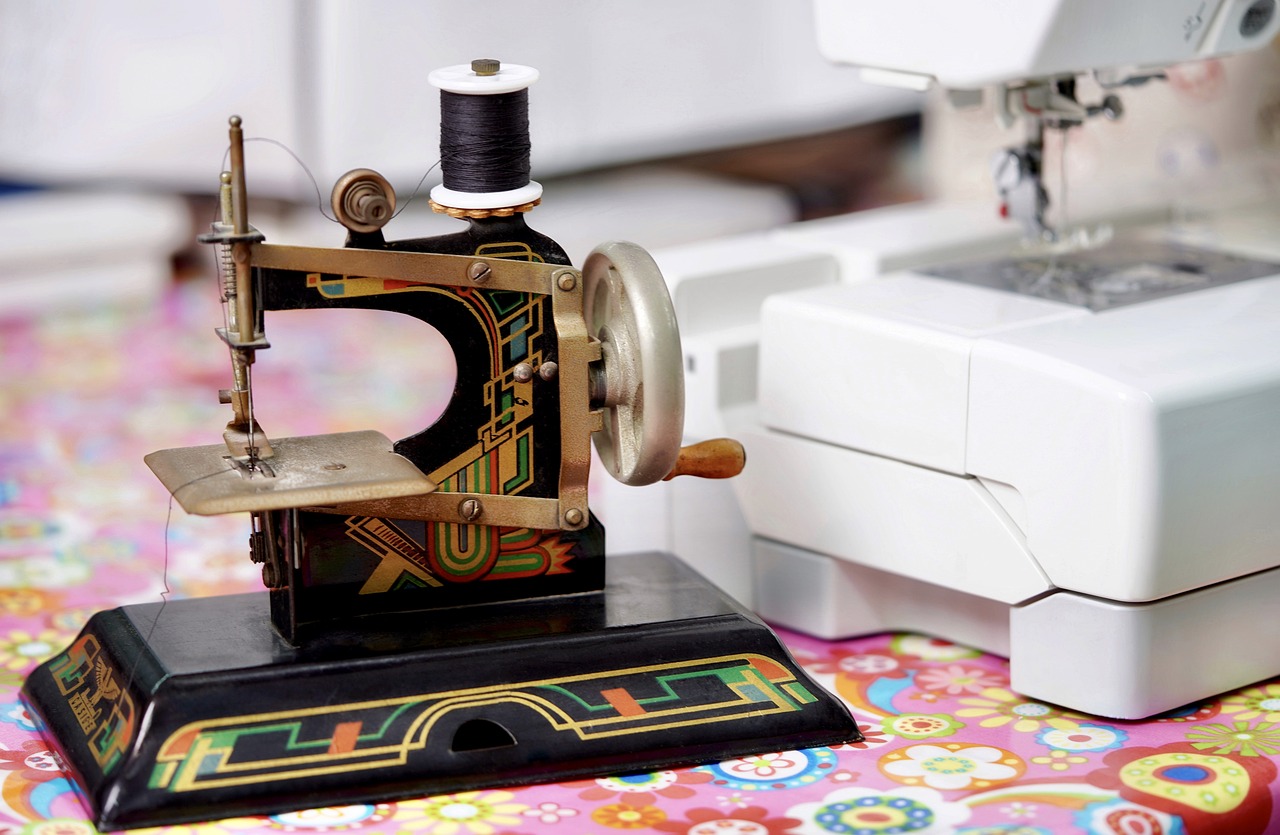
Basic Stitching Techniques
When you first dive into the world of sewing, it can feel like stepping into a vast ocean of possibilities. But don’t worry! The key to navigating this exciting journey lies in mastering some . These foundational skills will not only bolster your confidence but also enhance the quality of your projects. Think of these techniques as the building blocks of your sewing adventure—without them, your creations might feel a bit wobbly!
Let’s start with the most fundamental stitch: the straight stitch. This technique is the bread and butter of sewing. It’s perfect for creating seams and is the go-to stitch for most projects. Imagine drawing a straight line on fabric; that’s essentially what you’re doing with a straight stitch! To execute this, simply guide your fabric under the needle while keeping an even pace. Remember, practice makes perfect, so don’t hesitate to run a few test stitches on scrap fabric!
Next up is the zigzag stitch. This stitch is like the Swiss Army knife of sewing—versatile and useful in various situations! Use it to finish raw edges to prevent fraying, or for adding a decorative touch to your projects. The zigzag stitch is particularly handy when working with stretchy fabrics, as it allows for flexibility without compromising the seam’s integrity. Just visualize it as a gentle wave flowing along the edge of your fabric, providing both strength and style.
Then we have the backstitch, a technique that’s particularly useful when you want to reinforce your seams. Imagine it as a safety net for your sewing projects. To perform a backstitch, simply sew a few stitches forward, then reverse back over them. This creates a strong, durable seam that can withstand wear and tear. It’s like putting on an extra layer of protection for your creations!
Now, let’s talk about the age-old debate: hand sewing vs. machine sewing. Each method has its unique charm and advantages. Hand sewing is like writing a heartfelt letter; it allows for a personal touch and is great for delicate tasks. On the other hand, machine sewing is akin to typing an email—quick and efficient for larger projects. Depending on your needs, you might find that a blend of both techniques works best for you. Consider your project’s requirements, your available time, and your comfort level with each method.
To make your sewing experience even more enjoyable, here are some tips for perfecting your stitches:
- Keep your fabric taut: This ensures even stitching and prevents puckering.
- Use the right needle: Different fabrics require different needles, so choose wisely!
- Practice on scraps: Before diving into your main project, test your stitches on leftover fabric.
In conclusion, mastering these basic stitching techniques is essential for any beginner looking to enhance their sewing skills. They serve as the foundation upon which you can build your sewing repertoire. So grab your fabric, thread your needle, and let your creativity flow! Remember, every stitch you make brings you one step closer to discovering your unique sewing style.
Q: What is the best stitch for beginners?
A: The straight stitch is the best starting point for beginners, as it's the most commonly used stitch and is easy to master.
Q: How can I prevent my fabric from fraying?
A: Using a zigzag stitch along the raw edges of your fabric can help prevent fraying.
Q: Should I invest in a sewing machine as a beginner?
A: If you plan to sew regularly, investing in a beginner-friendly sewing machine can save you time and provide more versatility in your projects.
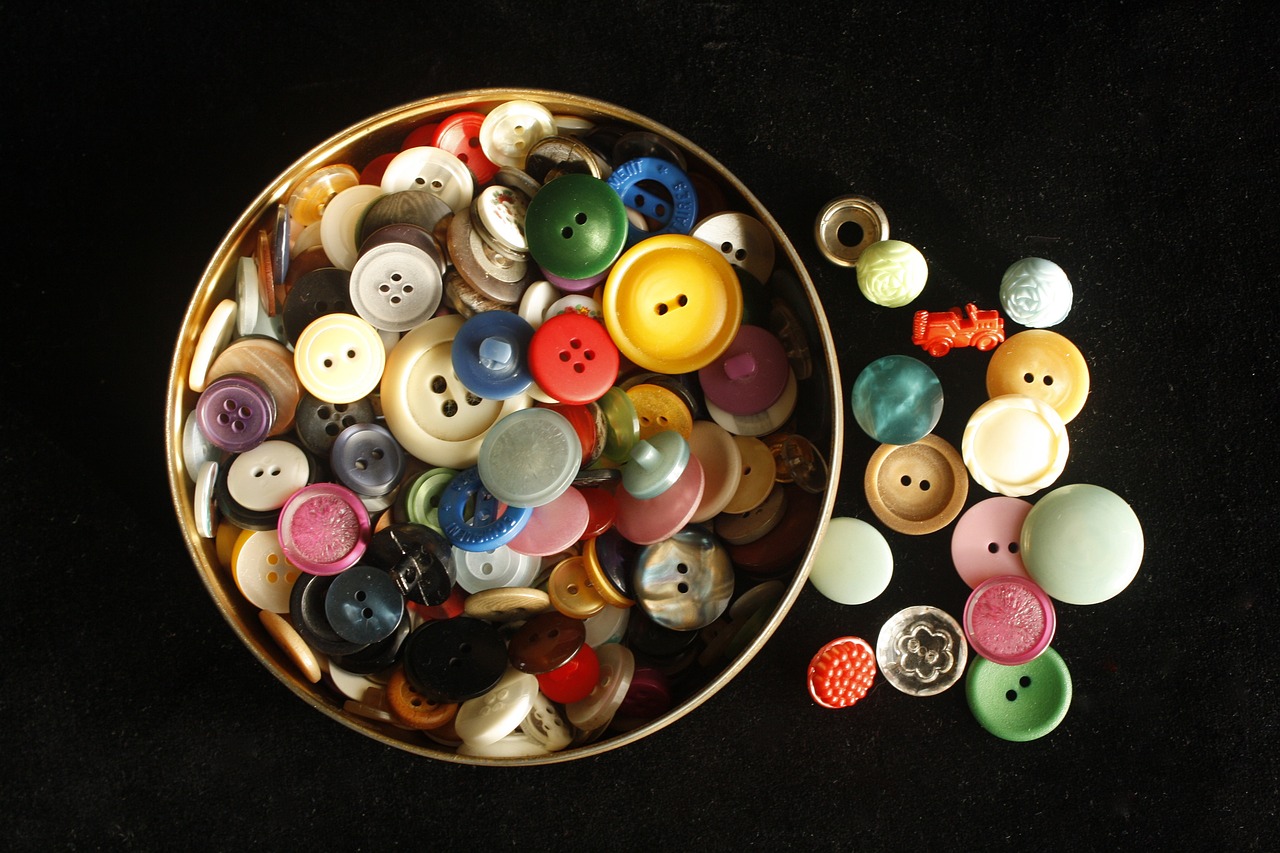
Hand Sewing vs. Machine Sewing
When it comes to sewing, one of the most common dilemmas beginners face is choosing between hand sewing and machine sewing. Each method has its own unique charm and advantages, making it essential to understand the nuances of both. Think of hand sewing as the art of crafting with your own two hands, where every stitch is a personal touch, while machine sewing is like having a powerful assistant that speeds up the process, allowing you to tackle larger projects with ease.
Hand sewing is often seen as a more intimate and traditional approach. It allows for greater control and precision, particularly when working on delicate fabrics or intricate designs. Imagine threading a needle and feeling the fabric glide through your fingers; it’s a tactile experience that can be incredibly rewarding. However, it can be time-consuming, especially for larger projects. If you have the patience of a saint and enjoy the meditative rhythm of stitching, hand sewing might be your calling.
On the other hand, machine sewing is a game-changer for many. With a sewing machine, you can whip up garments in a fraction of the time it would take by hand. It’s like having a turbocharged engine for your creativity! However, it does come with a learning curve. Getting to know your machine—understanding its settings, threading it correctly, and mastering different stitches—can feel overwhelming at first. But once you get the hang of it, the possibilities are endless.
To help you weigh your options, here’s a quick comparison of the two methods:
| Aspect | Hand Sewing | Machine Sewing |
|---|---|---|
| Control | High - great for details | Moderate - limited by machine capabilities |
| Speed | Slow - takes time | Fast - quick for large projects |
| Portability | Very portable - easy to take anywhere | Less portable - requires a power source |
| Learning Curve | Gentle - easy to start | Steeper - requires practice |
| Cost | Low - minimal tools needed | Higher - machine investment required |
Ultimately, the choice between hand sewing and machine sewing comes down to your personal preferences, project requirements, and the time you have available. Many sewists find that a combination of both methods works best for them. For example, you might choose to hand sew hems for a polished finish while using a machine for the bulk of the construction. This hybrid approach can enhance your sewing experience, allowing you to enjoy the benefits of both worlds.
So, whether you find joy in the rhythmic motion of hand stitching or the swift precision of a sewing machine, embrace your journey. Each stitch, whether by hand or machine, is a step towards discovering your unique sewing style.
- Can I start sewing with just hand sewing? Absolutely! Many beginners start with hand sewing to learn basic stitches and techniques.
- Is machine sewing difficult to learn? It can be challenging at first, but with practice, you'll become more comfortable and confident.
- Which method is better for beginners? It depends on your preferences. Hand sewing is simpler to start, while machine sewing is faster for larger projects.
- Can I combine both methods in my projects? Yes! Many sewists use both methods to achieve the best results.
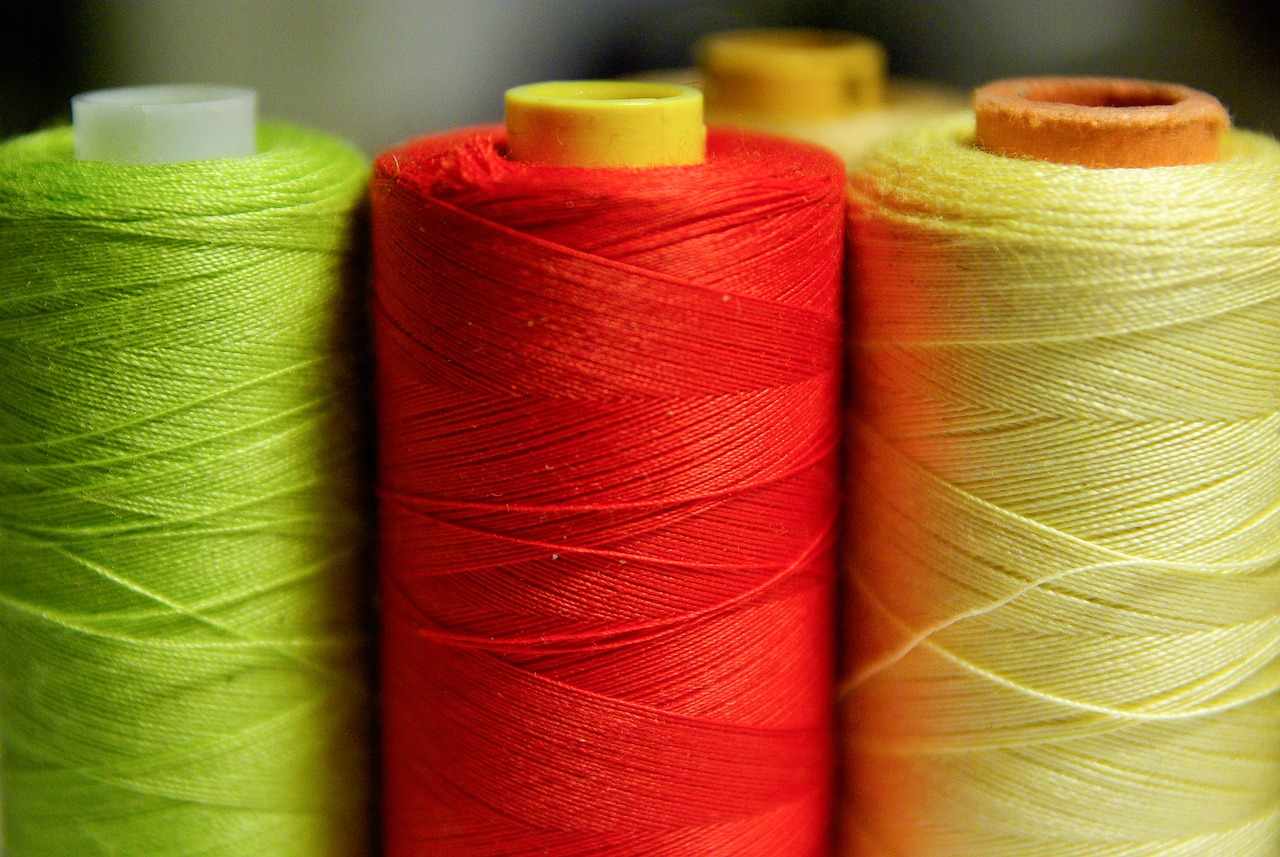
Tips for Perfecting Your Stitches
When it comes to sewing, the quality of your stitches can make or break your project. It's like the foundation of a house; if it's shaky, everything built on top will be unstable. To help you achieve that perfect stitch, here are some tried-and-true tips that can elevate your sewing game.
First and foremost, always use the right needle for your fabric. Just as a chef wouldn't use a butter knife to chop vegetables, you shouldn't use a universal needle for every type of fabric. Different fabrics require different needles; for instance, a ballpoint needle is fantastic for knits, while a sharp needle is ideal for woven fabrics. This simple change can drastically improve your stitch quality.
Next, consider your thread choice. Not all threads are created equal! Opt for high-quality threads that match the fabric type you're working with. A common mistake is using cheap thread that can fray or break easily, leading to frustration and uneven stitches. It's like trying to paint a masterpiece with a worn-out brush; the results will be less than stellar.
Another crucial tip is to maintain consistent tension on your sewing machine. If your stitches are too tight, you might notice puckering; too loose, and they may unravel. Adjusting the tension can feel like a balancing act, but with practice, you'll find the sweet spot. Don't hesitate to test your settings on a scrap piece of fabric before diving into your main project.
Additionally, practice makes perfect. Set aside time to experiment with different stitches and techniques. Create a sample swatch book where you can try out various stitch types, tension settings, and fabric combinations. This not only serves as a reference for future projects but also builds your confidence as you see your skills improve over time.
Moreover, take your time when sewing. Rushing can lead to mistakes that might haunt you later. Slow and steady wins the race here! If you find yourself getting frustrated, take a break. Sometimes, stepping away for a moment can provide the clarity you need to tackle your project with fresh eyes.
Finally, don't shy away from asking for help. Whether it’s joining a local sewing group or participating in online forums, connecting with other sewing enthusiasts can provide valuable insights. They may have tips and tricks that you haven't yet discovered. Remember, even the most skilled seamstresses were once beginners, and sharing knowledge is a beautiful part of the sewing community.
In summary, perfecting your stitches is a journey that involves the right tools, practice, and a little patience. With these tips, you'll be well on your way to creating stunning sewing projects that not only showcase your skills but also express your unique style.
- What is the best needle for beginners? A universal needle is a great start, but as you progress, consider using specialty needles based on your fabric type.
- How do I know if my tension is off? If your stitches look uneven or your fabric is puckering, it might be time to adjust your tension settings.
- Can I use any thread for my projects? It's best to match the thread type to your fabric. High-quality threads will yield better results.
- How often should I clean my sewing machine? Regular maintenance is key! Clean it after every few projects to keep it running smoothly.
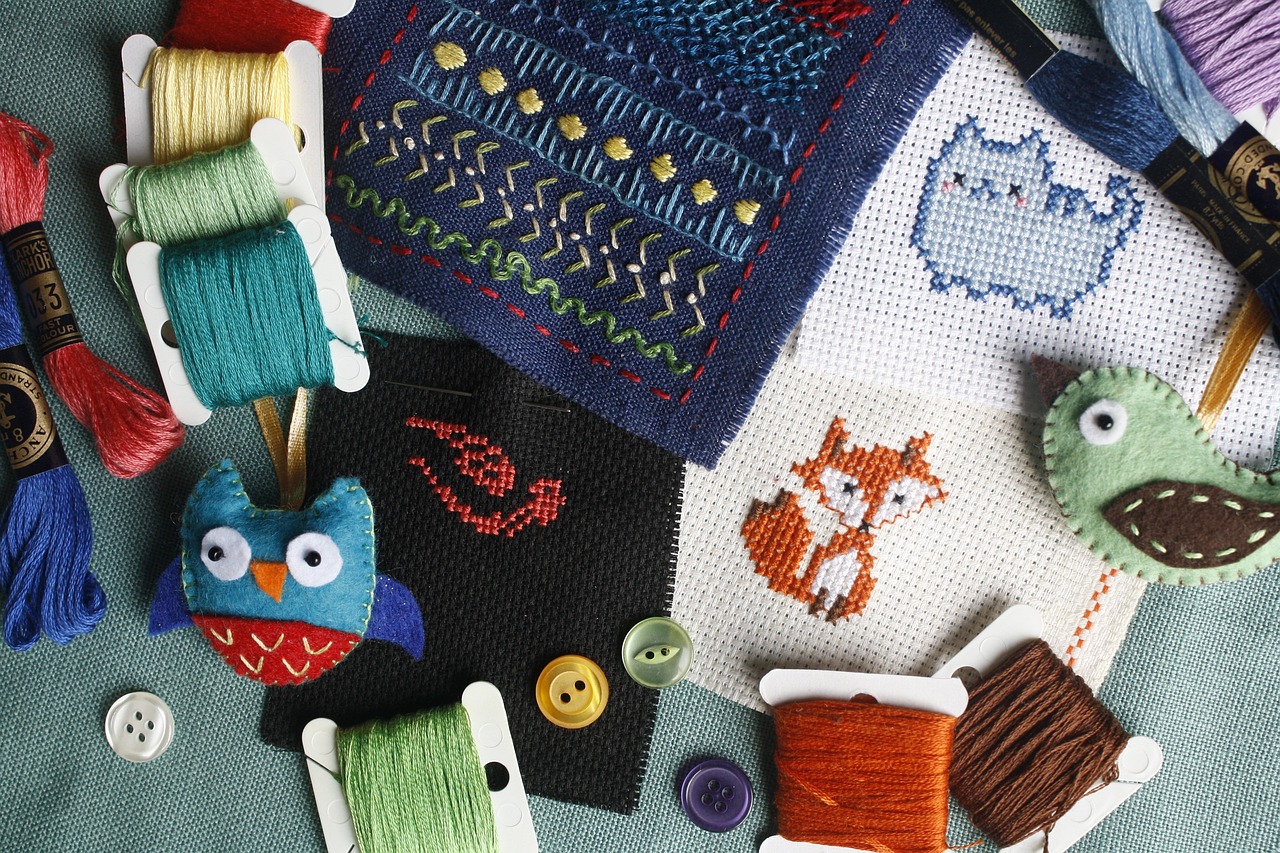
Choosing the Right Fabrics
When it comes to sewing, choosing the right fabric is like picking the perfect canvas for a painter. The fabric you select can make or break your project, influencing not just the look but also the feel and functionality of your final piece. It’s essential to consider several factors when choosing fabrics, including weight, texture, drape, and durability. Each of these elements can significantly impact how your garment or item turns out.
First off, let’s talk about fabric weight. This refers to how heavy or light a fabric is, which can affect the structure of your finished piece. For example, lightweight fabrics like chiffon or cotton lawn are fantastic for summer dresses, providing a breezy feel. On the other hand, heavier fabrics like denim or canvas are ideal for structured items such as jackets or bags. Understanding the weight of the fabric will help you determine if it’s suitable for your intended project.
Next, consider the texture of the fabric. Fabrics can range from smooth and sleek to rough and textured. The texture can influence not only the aesthetic appeal but also the comfort of the garment. For instance, a soft flannel is cozy and warm, making it perfect for loungewear, while a crisp cotton poplin can give a polished look for shirts and blouses. Think about how the fabric feels against your skin and how it will drape on your body; this is crucial for ensuring comfort in your finished piece.
Another important factor is the drape of the fabric, which refers to how it falls and moves. Fabrics with a good drape, like rayon or silk, flow beautifully and can create stunning silhouettes, especially in dresses. In contrast, stiffer fabrics like twill maintain their shape well and are great for structured garments. To visualize this, you might want to hold the fabric up and see how it behaves; does it fall gracefully, or does it stand up straight? This simple test can guide your decision.
Lastly, consider the durability of the fabric. Some fabrics are more resilient than others, which can be crucial depending on the intended use of your finished item. For example, if you're sewing a bag that will see daily use, you’ll want to choose a sturdy fabric like canvas or upholstery weight cotton. Conversely, if you're making a delicate blouse, a lightweight fabric like silk or voile might be more appropriate. Always think about how much wear and tear your project will endure.
To make the fabric selection process easier, here’s a quick reference table summarizing some common fabric types and their best uses:
| Fabric Type | Best For | Characteristics |
|---|---|---|
| Cotton | Shirts, Dresses | Breathable, Versatile, Easy to Sew |
| Silk | Dresses, Lingerie | Soft, Luxurious, Delicate |
| Denim | Pants, Jackets | Durable, Sturdy, Heavyweight |
| Rayon | Dresses, Blouses | Soft, Good Drape, Lightweight |
| Canvas | Bags, Home Decor | Heavyweight, Durable, Structured |
In conclusion, choosing the right fabric is a vital step in your sewing journey. Take your time to explore different types, feel their textures, and understand their properties. Your fabric choice is not just about aesthetics; it's about creating something that feels good, looks fantastic, and lasts. So, the next time you head to the fabric store, remember to ask yourself: what story do I want my fabric to tell?
- What is the best fabric for beginners? Cotton is often recommended for beginners due to its ease of handling and versatility.
- How do I know if a fabric is suitable for my project? Consider the weight, texture, drape, and durability of the fabric in relation to your project requirements.
- Can I mix different types of fabrics in one project? Yes, but make sure they have similar care instructions and drape characteristics for the best results.

Finding Your Ideal Patterns
When it comes to sewing, patterns are like the blueprints to a building; they guide you through the process of creating beautiful garments or items. But how do you find the perfect pattern that resonates with your personal style and skill level? It's a journey worth embarking on, as the right pattern can ignite your creativity and make your sewing experience all the more enjoyable.
First off, let’s talk about where to find these patterns. You can explore a variety of sources, ranging from commercial patterns to indie designers. Commercial patterns, often found in fabric stores, provide a wide array of options that are easy to follow, making them a great choice for beginners. On the other hand, indie patterns, which you can discover online, often offer unique designs that cater to more niche styles. These patterns can feel like hidden gems, waiting to be unearthed by those who dare to look beyond the mainstream.
So, how do you choose the right pattern? Start by considering your skill level. If you’re just starting, look for patterns labeled as “easy” or “beginner-friendly.” These usually have fewer pieces and simpler construction techniques, allowing you to build confidence without feeling overwhelmed. As you grow more comfortable with your sewing machine, you can challenge yourself with more complex patterns that incorporate advanced techniques.
Another important factor is the type of garment or item you want to create. Are you dreaming of a cozy sweater, a chic dress, or perhaps some stylish home decor? Knowing what you want to make can significantly narrow down your pattern search. For instance, if you’re looking to sew a dress, consider whether you want a fitted silhouette or something more relaxed. This decision will guide you toward the right patterns that align with your vision.
It’s also essential to pay attention to the size range offered by the pattern. Patterns often come in various sizes, but not all brands cater to the same range. Make sure to check the size chart included with the pattern to ensure it accommodates your measurements. If you find a pattern you love but it doesn’t come in your size, don’t despair! Many patterns can be altered to fit your body shape, giving you the opportunity to make it uniquely yours.
| Pattern Type | Advantages | Considerations |
|---|---|---|
| Commercial | Wide variety, easy to find | Less unique, may lack modern styles |
| Indie | Unique designs, often more detailed | May require online purchase, limited availability |
Once you've selected a few patterns that catch your eye, it's time to read the instructions. This might sound tedious, but understanding the steps involved can save you a lot of headaches later on. Take note of the fabric requirements, notions needed, and any special techniques mentioned in the instructions. This knowledge will help you gather everything you need before diving into your project.
Lastly, don’t shy away from modifying patterns to better fit your style. If you love a pattern but wish it had a different sleeve style or a longer hem, go ahead and make those changes! Sewing is all about expressing your creativity, and there’s no right or wrong way to do it. Remember, each modification you make brings you one step closer to creating something that truly reflects your personality.
- Where can I find sewing patterns? You can find sewing patterns at local fabric stores, online retailers, and websites dedicated to indie designers.
- How do I know if a pattern is suitable for my skill level? Patterns usually indicate skill levels on their packaging or website. Look for those labeled as “easy” or “beginner-friendly” if you're just starting out.
- Can I modify a pattern to fit my style? Absolutely! Modifying patterns is a great way to personalize your sewing projects and make them uniquely yours.
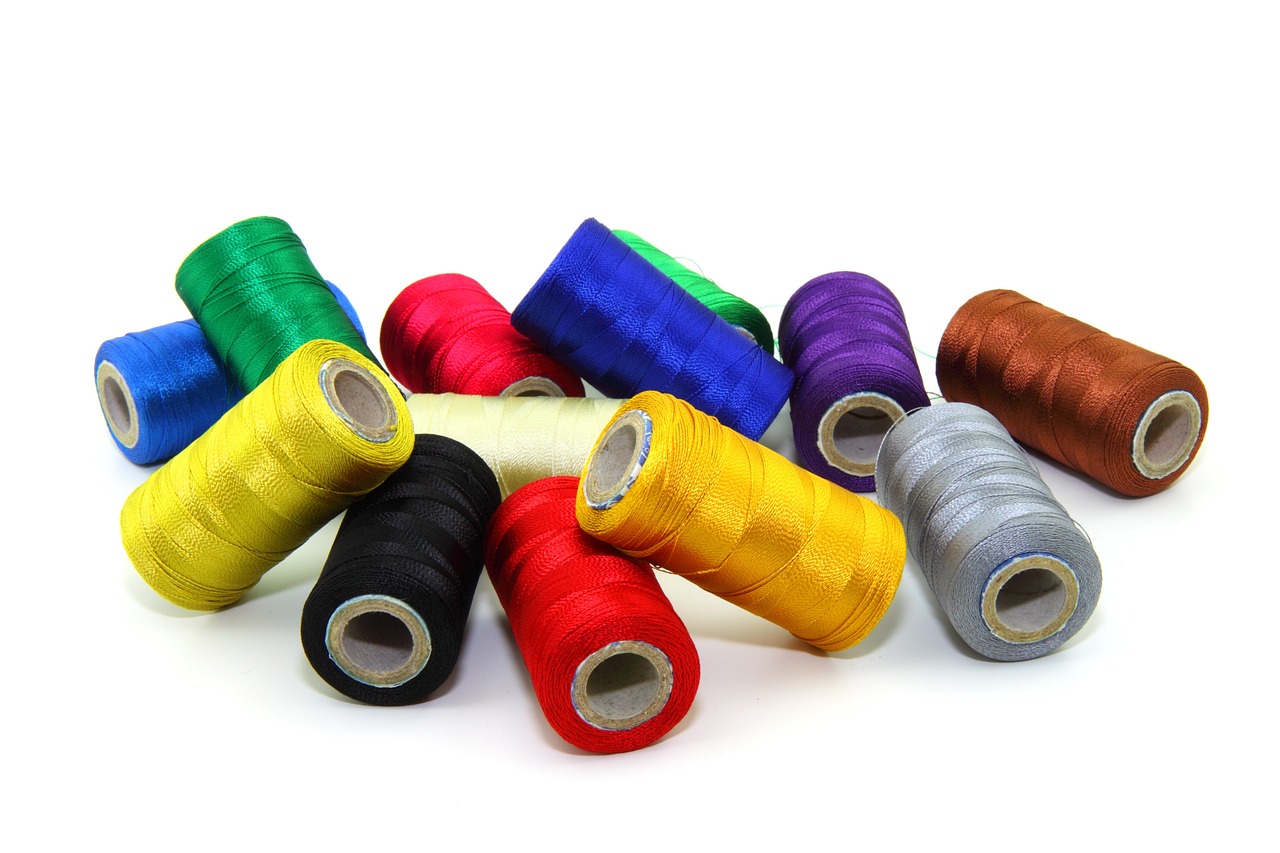
Understanding Pattern Types
When you're diving into the world of sewing, understanding the different types of patterns available is crucial. Patterns serve as the blueprint for your creations, guiding you through the process of transforming fabric into fabulous garments or items. There are primarily two categories of sewing patterns: commercial patterns and indie patterns. Each type has its own unique characteristics, advantages, and potential drawbacks that can influence your sewing journey.
Commercial patterns are produced by well-known companies and are widely available in fabric stores or online. These patterns often come with detailed instructions and are designed to cater to a broad audience. They typically feature a range of sizes, making them accessible for various body types. However, one downside is that many commercial patterns can feel a bit generic, lacking the personal touch that many sewists crave. They might not always align perfectly with your unique style, but they are a great starting point for beginners.
On the other hand, indie patterns are created by independent designers who often have a more niche focus. These patterns tend to offer more innovative designs and a wider variety of styles that can resonate with your personal aesthetic. Indie patterns usually come with a sense of community and support, often including online forums or social media groups where you can share your progress and seek advice. However, they may not always include the same level of detailed instructions as commercial patterns, which can be a challenge for beginners.
To help you navigate these options, here's a simple comparison table highlighting the key differences:
| Feature | Commercial Patterns | Indie Patterns |
|---|---|---|
| Availability | Widely available in stores and online | Available through independent designers’ websites |
| Design Variety | Standard designs, less unique | More creative and unique options |
| Instruction Detail | Usually detailed | May vary, often less detailed |
| Community Support | Limited | Strong community presence |
When selecting a pattern, consider your current skill level and what you hope to create. If you're just starting out, a commercial pattern might be the best choice to build your confidence. As you grow more comfortable with sewing, exploring indie patterns can provide the opportunity to express your individuality and creativity. Remember, the goal is to enjoy the process and create something that truly feels like you!
In addition to understanding the types of patterns, it’s also essential to think about how to adapt them to fit your style. Sometimes, a pattern might not be perfect right out of the envelope, and that's okay! With a little creativity and sewing know-how, you can modify patterns to better suit your vision. Whether it’s changing the length of a dress, altering sleeve styles, or even combining elements from multiple patterns, the possibilities are endless!
- What is the best way to choose a sewing pattern? Consider your skill level, the type of garment you want to create, and your personal style. Look for patterns that offer clear instructions and fit your sewing experience.
- Can I use a commercial pattern to create a unique design? Absolutely! You can modify commercial patterns by adding your own flair, such as changing fabrics or altering the design elements.
- Where can I find indie patterns? Indie patterns can often be found on the designers' websites, sewing blogs, or platforms like Etsy and Instagram.
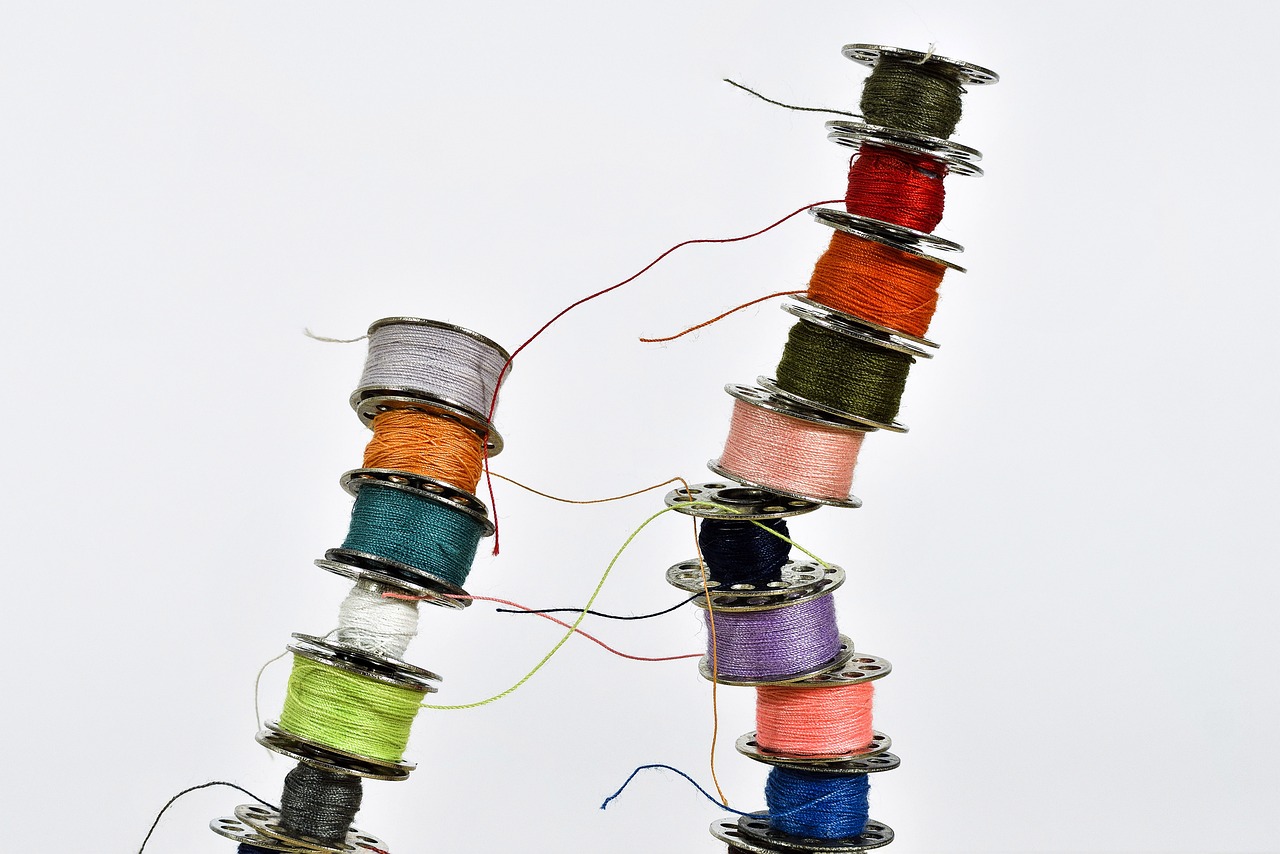
Adapting Patterns to Fit Your Style
When it comes to sewing, one of the most exciting aspects is the ability to adapt patterns to fit your unique style and preferences. Patterns are like a blank canvas, waiting for you to add your personal touch. Whether you’re looking to create a stunning dress, a cozy quilt, or a chic bag, understanding how to modify patterns can elevate your projects from ordinary to extraordinary. So, how do you go about making these adaptations? Let’s dive in!
First things first, it’s essential to understand the structure of the pattern you’re working with. Most patterns come with a set of standard measurements, but we all know that not every body is created equal. You might find that a pattern fits you in some areas but is too loose or tight in others. This is where your creativity kicks in! Start by taking your measurements and comparing them to the pattern. If you find discrepancies, don’t panic! You can adjust the pattern by either adding or subtracting fabric in specific areas.
For instance, if you’re working with a dress pattern that’s a bit snug around the bust, you can make a full bust adjustment (FBA). This involves adding extra fabric to the bust area, allowing for a more comfortable fit. Conversely, if the waist is too loose, you can simply take in the side seams. Remember, sewing is all about experimentation! Don’t be afraid to make these changes; after all, it’s your creation!
Another fantastic way to personalize your sewing projects is through design elements. Think about the style lines, neckline shapes, and sleeve types that resonate with you. For example, if you adore vintage fashion, you might want to modify a modern pattern to include a sweetheart neckline or puff sleeves. You can even mix and match elements from different patterns to create something entirely unique! This process is like being a fashion designer, where you get to play with styles and trends to create a masterpiece that reflects your personality.
Additionally, consider the fabric you choose for your project. The fabric type can drastically change the look and feel of a garment. A flowy chiffon will give a different vibe compared to a sturdy denim, even if the pattern remains the same. When adapting patterns, think about how the fabric drapes and behaves. For instance, if you're using a heavier fabric for a dress pattern originally designed for lighter materials, you may need to adjust the seam allowances or even the pattern pieces themselves to accommodate the weight of the fabric.
Lastly, don’t forget about the finishing touches! Adding your own flair through trims, buttons, or embellishments can make a significant difference. Whether it’s a pop of color with a contrasting zipper or delicate lace at the hem, these details can transform a simple pattern into something that feels uniquely yours.
To help you visualize the process of adapting patterns, here’s a quick table summarizing some common adjustments:
| Adjustment Type | How to Modify |
|---|---|
| Full Bust Adjustment (FBA) | Add extra fabric to the bust area. |
| Waist Adjustment | Take in or let out side seams as needed. |
| Length Adjustment | Shorten or lengthen the pattern pieces to your desired length. |
| Style Line Changes | Modify necklines, sleeves, and hemlines to fit your aesthetic. |
In conclusion, adapting patterns to fit your style is an empowering part of the sewing journey. It allows you to express your creativity and make garments that truly reflect who you are. So grab your scissors, make those adjustments, and let your sewing projects shine with your personal touch!
Q: How do I know which adjustments to make on a pattern?
A: Start by taking your measurements and comparing them to the pattern's size chart. Identify areas that don’t fit well and research specific adjustments for those areas.
Q: Can I use different fabrics with the same pattern?
A: Absolutely! Just be mindful of how the fabric behaves; heavier fabrics may require pattern adjustments for fit and drape.
Q: What if I'm not confident in making adjustments?
A: Practice makes perfect! Start with simple adjustments and gradually work your way up to more complex modifications. You can also find online tutorials that guide you through the process.
Frequently Asked Questions
- What is the best way to find my sewing style?
Finding your sewing style is like discovering your personal fashion fingerprint! Start by exploring different styles, such as modern, vintage, or bohemian. Look at what inspires you—whether it's colors, patterns, or textures. Try sewing a few different projects to see what resonates with you the most. Remember, your style can evolve over time, so don’t be afraid to experiment!
- What essential techniques should I learn as a beginner?
As a newbie in the sewing world, mastering basic techniques is crucial. Start with fundamental stitching techniques like straight stitch, zigzag, and backstitch. These will help you create strong seams. Additionally, familiarize yourself with both hand sewing and machine sewing to see which method you prefer. Practice makes perfect, so don’t shy away from repetition!
- How do I choose the right fabric for my projects?
Choosing the right fabric can feel a bit like picking the perfect ice cream flavor—there are so many options! Consider the properties of different fabrics, like their weight, stretch, and drape. Think about the type of project you’re working on and how the fabric will affect the final result. Don’t hesitate to feel the fabric and visualize how it will look in your finished piece!
- What types of sewing patterns should I look for?
When it comes to sewing patterns, you have a buffet of choices! You can opt for commercial patterns that are widely available or indie patterns that offer unique designs. Consider your skill level and the complexity of the pattern before diving in. It’s like picking a recipe—some are quick and easy, while others require more time and skill!
- Can I modify patterns to fit my personal style?
Absolutely! Modifying patterns is a fantastic way to make them uniquely yours. You can change the length, add or remove sleeves, or even mix and match different elements from various patterns. Think of it as customizing a pizza—add your favorite toppings to make it just right for you!



















